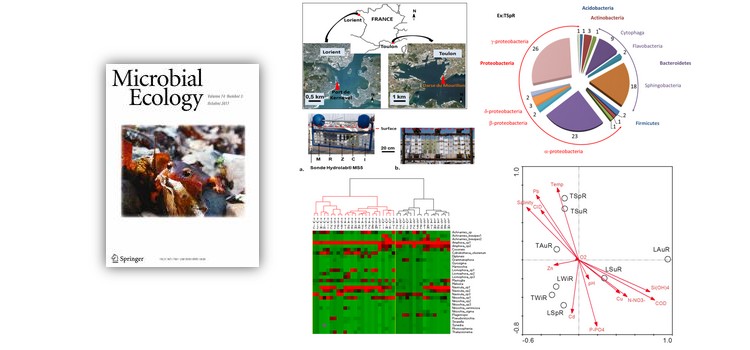Spatio-temporal variations of marine biofilm communities colonizing artificial substrata including antifouling coatings in contrasted coastal environments
Abstract :
Surface colonization in seawater first corresponds to the selection of specific microbial biofilm communities. By coupling flow cytometry, microscopy and high throughput sequencing (HTS, 454 pyrosequencing) with artificial surfaces and environmental analyses, we intend to identify the contribution of biofilm community drivers at two contrasted French sites, one temperate and eutrophic (Lorient, Atlantic coast) and the other at a mesotrophic but highly contaminated bay (Toulon, North-Western Mediterranean Sea). Microbial communities were shaped by high temperatures, salinity and lead at Toulon by but nutrients and DOC at Lorient. Coatings including pyrithione exhibited a significant decrease of their microbial densities except for nanoeukaryotes. Clustering of communities was mainly based on the surface type and secondly the site, whereas seasons appeared of less importance. The in-depth HTS revealed that γ- and α-proteobacteria, but also Bacteroidetes, dominated highly diversified bacterial communities with a relative low β-diversity. Sensitivity to biocides released by the tested antifouling coatings could be noticed at different taxonomic levels: the percentage of Bacteroidetes overall decreased with the presence of pyrithione, whereas the α/γ-proteobacteria ratio decreased at Toulon when increased at Lorient. Small diatom cells (Amphora and Navicula spp.) dominated on all surfaces, whereas site-specific sub-dominant taxa appeared clearly more sensitive to biocides. This overall approach exhibited the critical significance of surface characteristics in biofilm community shaping.
Keywords :
Marine biofilm . Biofouling . Environmental factors . High throughput sequencing . Flow cytometry . Microbial ecotoxicology



